Archivo de noticias y eventos
1451 - 1500 de un total de 2404
También puede acceder a la lista de noticias publicadas en los medios relacionadas con el Instituto de Astrofísica de Andalucía - CSIC.
Pages

|
15/12/2011 - 13:00
X-ray properties of nearby luminous infrared galaxies I present results of X-ray observations of a complete sample of luminous infrared galaxies (LIRGs) from the GOALS, a multi-wavelength project to study the most luminous IR-selected galaxies in the local Universe. X-ray imaging at an arc-second resolution obtained with the Chandra X-ray Observatory provides locations of an active nucleus, if present, and extended morphology of starburst-driven winds in those LIRGs. An inspection of their X-ray... Kazushi Iwasawa |
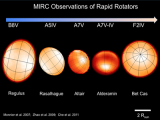
|
13/12/2011
Se resuelve el problema de medir la temperatura de las estrellas achatadas Para medir la temperatura de estas estrellas achatadas se emplea, desde hace casi un siglo, un teorema que ahora se ha demostrado incompleto |

|
01/12/2011 - 13:00
Mass, metallicity and SFR relationships in star forming galaxies using deep surveys To understand the formation and evolution of galaxies, it is important to have a full comprehension of the role played by Metallicity, Star Formation Rate (SFR), and stellar mass of galaxies. The interplay of these parameters at different redshifts will substantially affect the evolution of galaxies and, as a consequence, the evolution of these parameters provides important constraints for the galaxy evolution models. We studied the... Maritza A. Lara-Lopez |
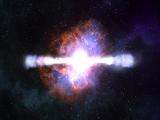
|
01/12/2011
Las estrellas han hallado una nueva forma de morir Un peculiar estallido, acaecido el día de Navidad de 2010, apunta a la fusión de dos estrellas, una estrella de neutrones y una estrella gigante, tras una etapa en la que compartieron envoltura. |
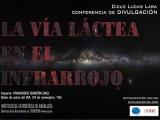
|
24/11/2011 - 19:00
La Vía Láctea en el infrarrojo El gran handicap para el estudio de nuestra Galaxia es que, precisamente, nos encontramos dentro de ella. A pesar de esto, nuestro conocimiento sobre la Vía Láctea ha aumentado exponencialmente en los últimos años, especialmente gracias a la investigación en una longitud de onda que nos permite adentrarnos donde el visible no puede: el infrarrojo. Francisco Garzón |

|
24/11/2011 - 13:00
The Bayesian Galaxy Cluster Finder and its Application to Large Surveys One of the main purposes of Large Surveys is the study of galaxy clusters. However, it is not an easy task to compile a complete sample. In this talk, I will present a new technique for detecting galaxy clusters called the Bayesian Cluster Finder (BCF) which is able to determine the position, redshift and richness of clusters in any survey. I will introduce the simulations that we performed to test the algorithm through realistic mock galaxy... Begoña Ascaso |
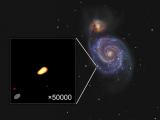
|
24/11/2011
Fotografían la supernova más joven, captada al poco de estallar La imagen en alta definición de la explosión estelar aporta información para acotar la velocidad de expansión de la onda de choque que se genera en este tipo de fenómenos tan violentos |
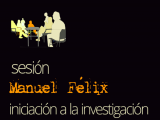
|
23/11/2011 - 16:00
Vientos Estelares en Estrellas Masivas En esta charla se dará una perspectiva general sobre los vientos en estrellas masivas. En particular se pretende explicar la emisión de rayos X alrededor de estrellas masivas evolucionadas. Jesús Alberto Toalá Sala de Juntas del Instituto de Astrofísica de Andalucía (IAA-CSIC) |

|
17/11/2011 - 13:00
Revealing the hidden supernova population in luminous infrared galaxies A substantial fraction of star formation (SF) and hence of the core-collapse supernovae (CCSNe) in the Universe is hidden behind dust. At higher-z obscured star formation in luminous and ultraluminous infrared galaxies (LIRGs and ULIRGs) actually dominates over SF seen in the UV and optical. These same objects are expected to hide in their nuclear regions large numbers of undetected CCSNe. In this talk I describe our ongoing efforts using... Seppo Mattila |

|
13/11/2011
Hallada la clave que completa los modelos de los "relámpagos" en la alta atmósfera Científicos del IAA han hallado el motivo de que, en ocasiones, estos destellos se produzcan con cierto retardo con respecto al rayo que los desencadena |

|
07/11/2011
Ojos como platos con la ciencia Mañana martes inauguramos la quinta edición de Noches de Ciencia, un ciclo de divulgación organizado por el IAA para la Semana de la Ciencia |

|
03/11/2011 - 13:00
Gamma-Ray-Bursts, High-Energy-Cosmic-Rays and Beam-Plasma Instabilities Gamma-Ray-Bursts and High-Energy-Cosmic-Rays are two of the most intriguing enigmas of astrophysics. A promising scenario solving both problems consists in the Fermi-like acceleration of particles by relativistic collisionless shocks. These shocks could generate the Gamma Burst together with some highly energetic cosmic rays, in the earlier phase of a Supernovae explosion. Later on, the Supernovae Remnant could still accelerate cosmic... Antoine Bret |

|
02/11/2011 - 16:00
El zoológico de los plasmas en la alta atmósfera En verano de 1989 investigadores estadounidenses grabaron varios fotogramas de intensos destellos luminosos provenientes de un fragmento de cielo, sin nubes localizado a más de 50 km de altura y que, sin que ellos se dieran cuenta en ese momento, se encontraban sobre lejanas nubes de tormenta. Habían hecho la primera observación de los llamados Transient Luminous Events o TLEs. Francisco Carlos Parra Rojas Sala de Juntas del Instituto de Astrofísica de Andalucía (IAA-CSIC) |

|
27/10/2011 - 14:00
Locating the gamma-ray emission region in AGN from multi-messenger observations Relativistic jets in AGN, in general, and in blazars, in particular, are among the most energetic and powerful astrophysical phenomena known so far. Their relativistic nature provides them with the ability to emit profusely at all spectral ranges from radio wavelengths to gamma-rays. They display extreme variability at all time scales (from hours to years). Since the birth of gamma-ray astronomy, locating the origin of gamma-ray emission has... Iván Agudo |
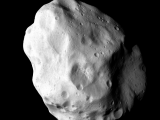
|
27/10/2011
Lutetia da pistas sobre el origen del Sistema Solar Imágenes del asteroide tomadas con la sonda Rosetta revelan que es un resto de las primeras etapas de formación del sistema planetario |
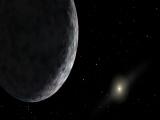
|
26/10/2011
Eris, el planeta enano que "destronó" a Plutón, podría ser menor que él Se ha empleado la ocultación de una estrella por parte de Eris para determinar su tamaño con mayor precisión |

|
20/10/2011 - 14:00
Mapping star-formation in the Milky Way In the last few years, it has become possible to measure the distance and the velocity vector of young stars located within 500 pc of the Sun with an accuracy of order 1% using Very Long Baseline Interferometry (VLBI) techniques. This represents an improvement by more than 1 order of magnitude over what was previously possible, and opens the door to some extremely high accuracy astrophysics. In particular, theoretical pre-main sequence... Laurent Loinard |
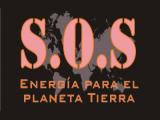
|
13/10/2011 - 19:00
S.O.S Energía para el planeta Tierra Cada día, a menudo inconscientemente, consumimos enormes cantidades de energía: suena el despertador digital, encendemos la luz, la caldera calienta el agua para tomar una ducha que nos despeje; llegamos al trabajo y tenemos los ordenadores encendidos todo el día, aire acondicionado en verano y calefacción en invierno. Y así hasta que, al final de nuestra jornada, nos acostamos y apagamos las luces, quizá tras haber visto una película en una... Miguel Angel Pérez Torres |

|
06/10/2011 - 15:00
Estallidos de rayos gamma: una breve introducción Los Estallidos de Rayos Gamma son los eventos más energéticos en el Universo después del Big Bang. Ocurren a distancias cosmológicas, con desplazamientos al rojo conocidos de hasta z=8.2. Son fenómenos de sumo interés para diversas áreas de la Astronomía y la Física de Altas Energías. Dada la falta de transparencia de nuestra atmósfera a los rayos gamma y la corta... Juan Carlos Tello Sala de Juntas del Instituto de Astrofísica de Andalucía (IAA-CSIC) |

|
22/09/2011 - 14:00
Early r-process enrichment in the halo: Process and implications/The future role of the Nordic Optical Telescope I: Early r-process enrichment in the halo: Process and implications Current thinking suggests that the outer Galactic halo formed first, with stars dominated by fresh C(NO) elements, but soon with increasing amounts of heavier elements. The now appreciable sample of extremely metal-poor (EMP) stars with [Fe/H] ~ -3 trace the transition to this chemically more diversified regime. A small fraction of these EMP giants contain r-process... Johannes Andersen |
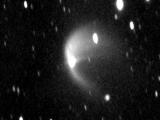
|
21/09/2011
La cola del asteroide Scheila se debió a una colisión El asteroide Scheila mostró a finales de 2010 una apariencia similar a la de los cometas, con una cola bien definida que desapareció a los pocos días. Astrónomos del IAA han analizado el evento y lo atribuyen al choque de un objeto menor |
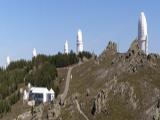
|
19/09/2011
Los archivos científicos del Observatorio de Calar Alto: un mundo de descubrimientos al alcance de todos A partir de julio de 2011 el Observatorio de Calar Alto proporciona a la comunidad científica un acceso a los datos más eficiente y seguro, a través de un nuevo sistema de archivo de datos integrado en el Observatorio Virtual |

|
16/09/2011 - 13:00
Early Planet Formation from an Experimentalist’s Point of View Planet formation starts in gaseous protoplanetary disks. Small grains move around, collide, stick together and grow. However, many collisional roads also lead to destruction of larger bodies. Which ones are prevailing and if this is the basic way to planet formation is still an open question, but there are modes to grow particles to larger size even in ‘high speed’ collisions. This talk will also touch upon processes of transport... Prof. Gerhard Wurm |

|
05/09/2011 - 09/09/2011
20th Stellar Pulsation Conference Series Granada |

|
05/09/2011
Las pulsaciones estelares, a debate en Granada Durante toda esta semana se celebrará en Granada el congreso internacional más importante en el campo de las estrellas pulsantes |

|
07/07/2011 - 14:00
Coagulation, restructuring and fragmentation of dust grains in the protoplanetary disks: first stages of Solar System formation The understanding of the formation of the planetary systems is one of the main topics of modern astrophysics and its study requires a synergetic effort of observations, laboratory experiments and theoretical models. It is generally accepted that planets originate in the dust disk that remains around a star after its formation (protoplanetary disk). Nevertheless there are no clear ideas on the physical conditions that are required, neither on... Walter Sabolo |

|
30/06/2011 - 19:00
Revoluciones y Mitos Copernicanos Copérnico es uno de los astrónomos más importantes y famosos de la historia, hasta el punto que la expresión 'giro copernicano' ha entrado en el lenguaje corriente con el significado de cambio drástico de opinión. En la cosmología moderna se usa el concepto del principio copernicano para indicar que la Tierra no ocupa un lugar privilegiado en el universo. Algunos autores van más allá y responsabilizan a Copérnico de rebajar la importancia del... Jesús Maíz |

|
30/06/2011 - 14:00
Quasi-periodicities in the periodograms of Corot Delta Scuti stars Periodic patterns are not expected to be found in the frequency spectra of delta-Scuti stars, as in solar-like pulsators. However, some efforts have been carried out in order to find any signal of periodicity in this type of stars (Handler et al., 1997; Breger et al., 1999, 2009). These works used ground-base observations and the results have not been conclusive. In our study we have used data from CoRoT of two delta-Scuti stars poorly known. We... Antonio García Hernández |

|
29/06/2011 - 15:00
El impacto de la astrosismología en astrofísica El conocimiento sobre la estructura y la física de los interiores estelares ha tenido un importante avance durante las últimas décadas gracias a la interpretación de las pulsaciones observadas en ellas. Esa es la meta principal de la Astrosismología. No obstante, los resultados que se desprenden de las investigaciones realizadas por astrosismólogos pueden tener un gran impacto sobre distintos campos de... Javier Pascual Granado Sala de Juntas del Instituto de Astrofísica de Andalucía (IAA-CSIC) |
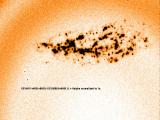
|
27/06/2011
OSIRIS, un GPS para localizar estallidos de rayos gamma en el universo El instrumento, ubicado en el GTC, propicia el primer intento de estudiar de forma simultánea el entorno de una emisión de rayos gamma y una supernova |

|
20/06/2011 - 14:00
Simulation of Relativistic Jets with Macroscopic and Microscopic Processes and Associated Self-consistent Radiation Relativistic jets are ubiquitous in astrophysical systems. In this talk I will present recent research results from RMHD simulations designed to study the CD kink instability of relativistic jets and the magnetic field amplification that occurs in relativistic shocks in an inhomogeneous medium. I will then present the results of RPIC simulations of particle acceleration in relativistic shocks and self-consistent calculation of the radiation at... Ken Nishikawa |

|
16/06/2011 - 14:00
Time-Dependent Hamiltonians in Quantum Mechanics and Inflationary Cosmology We revise the problem which appears in Quantum Mechanics when the Hamiltonian depends explicitly on time and provide a general setting to address such quantum systems. As a paradigmatic example we analyse the case of the damped harmonic oscillator (satisfying the Caldirola-Kanai equation) and extend the system to accomodate the ordinary time translation as a true symmetry (Bateman dual system). This general scheme applies in particular to the... Julio Guerrero García |

|
16/06/2011
Se detecta un estallido único y extremadamente intenso en el núcleo de una galaxia lejana El estallido podría deberse a la ruptura de una estrella próxima por el agujero negro supermasivo del centro de la galaxia. Astrónomos del Instituto de Astrofísica de Andalucía (IAA-CSIC) han participado en el seguimiento del evento |

|
08/06/2011 - 15:00
Método K-Correlated para el estudio del transporte radiativo en Marte En esta sesión CCD os explicaré en que consiste el método k-correlated, técnica usada para el estudio del transporte radiativo. Hablaré sobre sus ventajas e inconvenientes y expondré algunos de los últimos resultados que hemos obtenido. Javier Ruiz Madrona Sala de Juntas del Instituto de Astrofísica de Andalucía (IAA-CSIC) |

|
08/06/2011
Entrega de premios en el Proyecto de Iniciación a la Investigación Astronómica en Secundaria (PIIAS) TESTE El pasado 8 de mayo se celebró la entrega de premios del I Proyecto de Iniciación a la Investigación Astronómica en Secundaria (PIIAS), una iniciativa en la que han participado setenta y siete alumnos de ESO y bachillerato |

|
07/06/2011 - 14:00
EST: a large solar telescope for the XXI century The European Solar Telescope (EST) is a project for a 4-meter class telescope to be located in the Canary Islands. It is promoted by the European Association for Solar Telescopes (EAST). This is a consortium formed by a number of research organizations from fifteen European countries (Austria, Croatia, Czech Republic, France, Germany, Hungary, Italy, the Netherlands, Norway, Poland, Slovak Republic, Spain, Sweden, Switzerland, and United... Manolo Collados |

|
07/06/2011 - 09/06/2011
III Reunión Española de Física Solar y Heliosférica Granada |

|
07/06/2011
Un congreso reúne en Granada a los especialistas en física solar y en climatología espacial del país Hoy se ha inaugurado en el Instituto de Astrofísica de Andalucía (IAA-CSIC) la III Reunión Española de Física Solar y Heliosférica, que reúne en Granada a todos los especialistas en física solar y climatología espacial que trabajan en España. |

|
05/06/2011 - 10/06/2011
II Workshop on Robotic Autonomous Observatories Málaga |

|
02/06/2011 - 14:00
Coronal heating on the Sun: new observations and “realistic” 3D numerical models The heating of the solar corona is a long standing problem of solar physics, in fact dating back to the time when it was first discovered that the corona was quite hot. In short, the question is how one can find a credible physical mechanism to transport and dissipate a small fraction of the “mechanical” energy contained in the convection zone in(to) the corona. Amusingly, most answers to the question date back to the late 1940... Prof. Viggo Hansteen |

|
31/05/2011 - 14:00
Dark Matter and Stars Under the assumption that Dark Matter (DM) is composed of Weakly Interacting Massive Particles (WIMPs), it can affect the properties of stars. In the local Universe effects are feeble, nonetheless they can in principle be used in order to pose constraints on the nature of DM particles with observations of the Sun, and of compact objects at the Galactic Center, in Globular Clusters and in White Dwarf Galaxies. The first generation of stars to... Fabio Iocco |

|
30/05/2011
Hacia una nueva definición de los cúmulos estelares Se clausura el congreso “Cúmulos Estelares y asociaciones”. Entre las conclusiones, los expertos abogan por una nueva definición de cúmulo estelar que englobe los diversos sistemas estelares que hoy en día se observan |
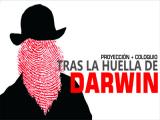
|
26/05/2011 - 19:00
Tras la huella de Darwin El investigador Juli Pereto nos presenta el documental 'Tras la huella de Darwin' producido por la Universidad de valencia con motivo del año Darwin. Inspirado en las crónicas de policia científica, el documental recorre las etapas del caso Maeso. La trama científica del Juicio nos conduce hasta las investigaciones en biología evolutiva, invitándonos a conocer la teoría de Darwin. |

|
26/05/2011 - 14:00
The BigBOSS dark energy experiment The BigBOSS experiment is a project designed to unlock the mystery of dark energy using existing ground-based facilities operated by National Optical Astronomy Observatory (NOAO). A new 5000-fiber R=5000 spectrograph covering a 3-degree diameter field will measure clustering properties in the distribution of galaxies and hydrogen gas spanning redshifts from 0.2 < z <3.5. This project will enable an unprecedent multi-object spectroscopic... F. Prada & M. Azzaro |

|
23/05/2011 - 27/05/2011
Stellar Clusters & Associations: A RIA Workshop on Gaia Granada |
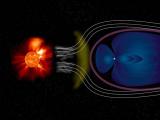
|
16/05/2011
¿Deben incluirse las partículas solares como agentes en los modelos climáticos? Un congreso sobre la interacción de las partículas procedentes del Sol con la atmósfera terrestre inicia nuevos estudios para determinar su impacto en el clima |

|
12/05/2011 - 14:00
ALMA Early Science Tbd Stéphane Léon |

|
09/05/2011 - 11/05/2011
3rd High Energy Particles Precipitation in the Atmosphere Workshop Granada |

|
05/05/2011 - 14:00
Gamma-ray Bursts - what kind of stars do they come from? Long GRBs are the most luminous objects in the universe and mark the collapse of a very massive star, usually accompanied by a relativistic supernova. Their large distances do not allow us to directly identify the progenitor star as we were able to do with some type of supernova. We therefore rely on indirect methods to derive some information on the kind of progenitor star or system and what makes a massive star to explode in a supernova or... Christina Thoene |
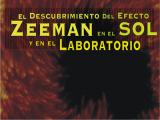
|
28/04/2011 - 19:00
El Efecto Zeeman El descubrimiento del efecto del campo magnético en las líneas espectrales - el llamado efecto Zeeman - es un hito fundamental dentro de la historia de la ciencia. Gracias a él, se ha podido determinar el papel básico de los campos magnéticos en el Universo. En esta charla se realiza una aproximación histórica a este descubrimiento y a su importancia en la historia de la Ciencia. Jose Carlos del Toro Iniesta |